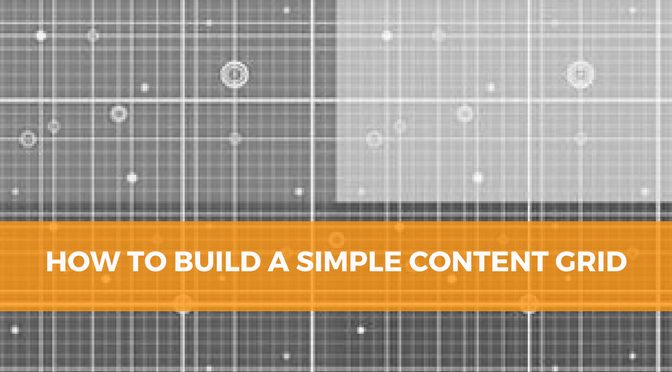How to Build a Simple Content Grid
This is the third in a series of articles on content marketing for software & technology marketers: How to Build a Simple Content Grid. The intent of this series is to lay out a clear roadmap for content marketing success.
In the last article in this series I wrote about developing buyer personas to get a detailed picture of who your buyers are and how they make the decision to “choose you, a competitor or do nothing at all”. Once you know that, you can figure out what information will attract a prospect in the first place and what is needed speed up the buying process. That’s easiest to do with a content grid.
A content grid maps your buyers’ needs at any stage in the buying process to the type of content they are most likely to consume. This is critical for two reasons: 1) so you can remove friction in the buying process and 2) to ensure your content creators are focused on creating content that actually helps in the buying process.
A Content Grid Template
I use an excel spreadsheet to create content grids with my clients. While we’ve sometimes tried to make a master grid that includes everything we need to know about every buyer, I’ve found it’s easier to create a separate grid for each buyer persona.
On the spreadsheet, I put the buying stages on the vertical axis with buyer and content needs on the horizontal axis. Here’s a content grid template you can download. For this template I used “research”, “consider”, “trial” and “buy” as the buying stages but you might have different names or levels of detail.
The buying stage that’s obviously missing from this template is “unaware”. I don’t include it because most of my clients are not interested in making prospects aware they have a problem – an expensive and time consuming undertaking. Most clients are more interested in buyers who are already feeling the pain.
A Cheat Sheet for Your Content Grid
To help you complete your content grid, I put together a Content Planning Matrix that includes the information technology buyers typically want at various stages, the content format they turn to at each stage, and the goals you might have for your content at this stage. The info in this matrix is based on my own experience as well as 3rd party research & data from sources such as TechTarget, and Eloqua.
Click to download the Content Planning Matrix.
Reminder of Why You Need a Content Grid
Just in case you’re thinking “oh man, do I really need to do this?”, here are 3 reasons it’s better not to skip this step:
Your content grid will bring clarity to an otherwise chaotic challenge. Multiple buyers in multiple buying stages looking at multiple content formats can be overwhelming to say the least. A content grid will shine a light on where you should be focused. You’ll feel better.
Your marketing content will actually contribute to the sales effort by generating more leads and speeding up the buying process. You’ll feel way better.
Your content development efforts will be much more efficient since content producers have a guide to keep them on track. Your profits might even go up. You’ll pat yourself on the back.
Next step: Auditing your current content.
Other articles of interest:
If you missed the first two articles in this series, you can access them here:
Content Marketing: A Wakeup Call for Software and Technology Marketers
Content Marketing Step 2: Buyer Personas
Although not specifically B2B, this is a good infographic from OpenView Venture Partners: Content Marketing in a Blink: The Content Grid v2

